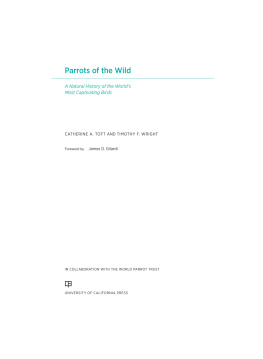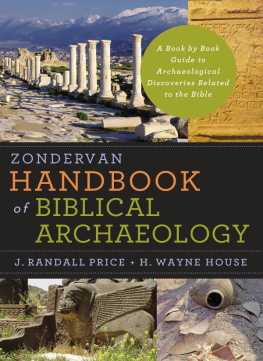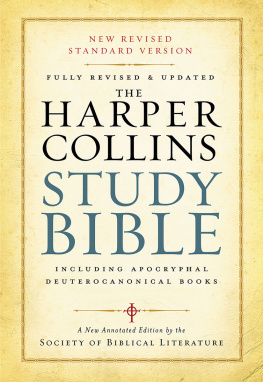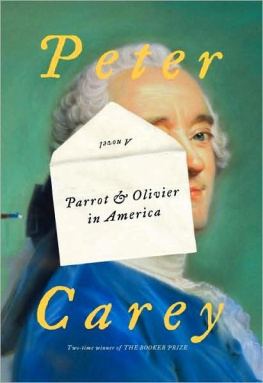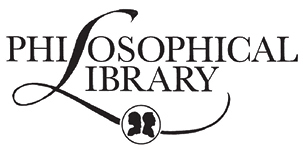


DISCOVERING BURIED WORLDS
ANDR PARROT
Translated by Edwin Hudson
from the French
DCOUVERTE DES MONDES ENSEVELIS
( Delachaux and Niestl, Neuchtel 1954 )
First English language edition July 1955
PREFACE TO THE SECOND EDITION
Returning to France from my ninth campaign of excavations at Mari (OctoberDecember 1953), I learn that the first edition of Dcouverte des mondes ensevelis is exhausted, and I am asked to allow a second impression to be made without alteration to the text.
The reception given to the book prompts me to change nothing of what I have written. To those who have at times expressed regret at the very minor place given to Egypt, my answer is two-fold. Firstly, I wished to confine myself in this book to what I knew at first hand. I believe that actual personal experiences are infinitely more interesting to the reader than excursions into fields where the author must necessarily be dependent on the work of others. Secondly, Egypt will certainly not be absent from the Studies , where it will be given the important place which is its due. But we must not rush ahead too fast, and I prefer to begin where my ignorance is least.
The criticisms I have read have likewise encouraged me to remain faithful to the spirit in which I endeavoured, as an introduction to the Studies in Biblical Archaeology , to define the problem and sketch its outlines. I have tried to do so frankly and sincerely. It is exactly twenty-seven years since I started my first excavation in the Middle East. By now I might be either blas or bored. But I find archaeological excavation more fascinating than ever.
Three weeks ago my workmens picks were beginning to reveal fresh buried treasures, which lack of time forced us to cover up again after only a glimpse: fresh monuments, a considerable architecture, hidden beneath tons of rubbish. I shall, God willing, exhume them just as all the others have been cleared.
It is fascinating, exciting worktiring, too, for the task becomes increasingly complex as one becomes aware of the incalculable importance of these records which are re-emerging into the light of day. They are important not only for a better understanding of the history and culture of near-eastern civilization, but because of the powerful light which they throw upon the religion and beliefs of a people in search of the supernatural forces which dominate them and on which they depend.
During this last compaign at Mari we have found more figures with hands joined in an attitude of worship. Since there have been men, men who pray, this has been for them the only possible attitude. This new and moving lesson comes to us once more across the ages, and it is a lesson which we must share with others. I hope that this book will in some small way contribute to that sharing. That was my object in writing it, and to that end I leave it in the hands of fresh readers, among whom I am confident, the past being the pledge of the future, that I shall find new and trusted friends.
Paris
1st January 1954
INTRODUCTION
Buried worlds, that is literally what the explorers of to-day are reconquering. Most of these ancient towns, destroyed by wars and eroded by time, had disappeared. Their ruins had little by little been covered up by the sand of the desert and the grass and scrub of the wilderness. Thus renowned cities had vanished, their very names often forgotten.
There came a day when men determined to find them again. In the forefront of this enterprise, France, with her diplomats, her travellers and pioneers, boldly pointed the way. Soon other countries followed, joining the French in this work, but never surpassing them. After a century of effort the balance-sheet is an impressive one.
The museums of Europe, the Near East and the New World have become the guardians of these precious relics. But do those who contemplate them in ever-increasing numbers hear the authentic echo of those voices from the past? How many there are who pass them by with but the most cursory of glances! If they do not feel, perhaps it is because they do not know, lacking the indispensable initiation. It is true that these worlds which the archaeologist and the historian have brought back from oblivion seem remote and very different from our own. Yet who would dare to claim that western civilization is not the heir of the civilizations of the Near East, succeeding to their heritage of art and culture, the inventory of which is now being made? Who would deny our debt to the peoples of the Nile valley or the banks of the Euphrates? Are there not in the East inexhaustible treasures waiting to be revealed to the scholar, the artist and the believer? How can we forget that it is to the Sumerians that we owe, among other things, the sexagesimal system, and to the Phoenicians our alphabet? Can we stand unmoved beneath the six columns of Baalbek or at the door of the tombs at Petra? What shall we say if it is granted us to penetrate the thoughts of the ancients, and to turn over the leaves of their antique archives? If, in short, we come to sit and warm ourselves by that fire which, never quite dead under its ashes, is being fanned anew by attentive hands?
In these desert lands the explorers have advanced. Under the excavators pick age-old civilizations have reappeared. They were thought to be dead. They were only sleeping.
Paris
15th September 1952
I
THE BURIED CITY RE-EMERGES
The traveller who disembarks in the Near East finds that the past asserts itself at once, but not everywhere with the same intensity, nor, above all, with equal vividness. This need not surprise us: there are degrees in the impressions we experience. Karnak by moon-light or the Ramesseum amid the long shadows of a January afternoon arouse an emotion quite different from that which one feels before the six columns of Baalbek or the door of Belshazzars palace at Babylon.
Undoubtedly the architectural style differs, even though the monuments are all on a colossal scale, but that does not altogether explain these varying and sometimes opposite reactions. The setting comes into play and gives the tone. One cannot forget the tawny screen of the desert cliff which follows the Nile, or the lofty yellow-brown line of Mount Lebanon, where, under the violent blue of the sky, white trails of snow linger tenaciously on late into the year. It is against this cliff that the Ramesseum raises its harmonious columns, and at the foot of Mount Lebanon that Baalbek spreads the proud glory of its gigantic ruins. At Babylon, the contrast is complete. Not far from the line of palms along the ribbon of the Euphrates, the great dilapidated heaps of disembowelled palaces lie under the blazing sun, which for nine months out of the twelve annuls every architectural detail. These grey bricks are cheerless compared with the golden limestone of Phoenicia or the rose-coloured granite of Aswan. Nevertheless the visitor is aware of overtones of great memories, and an accompanimentone might say an orchestrationof mighty names: Hammurabi, Nebuchadnezzar; without them this desolate place might seem bleak and disenchanted. But we may as well admit that it is disappointing to find that very little is left at Babylon of the hanging gardens, and practically nothing of the Tower of Babel.
Next page





